| Chromosome | 12 |
| Position | 6845711 |
| Gene | HTR2A |
CT CC (GG) TT (AA)41.3 43% 30.2 31.4% 24.6 25.6%
Breakdown:
rs5443 is a SNP in the HTR2A (GNB3) gene. It is associated with a number of metabolic conditions like obesity, diabetes, coronary heart diseases etc.
- This SNP codes for GNB3, which in turn codes for a second messenger complex associated with 5HT2A receptor signaling (Ref).
The T (A) allele is associated with:
- Better response to viagra, more likely to be obese, hypertension, SSRI-induced sexual dysfunction, respond to triptans for migraines (TT or AA). T (A) allele carriers are 2-3 fold more likely to be obese in Caucasian, Chinese, and African American populations (Ref).
- Higher risk for hypertension (Ref).
- Significant weight gain during pregnancy (TT [AA] vs CT [GA] or CC [GG]). Women had a significantly higher pre-pregnancy body mass index (Ref).
- Better response to Viagra (TT or AA). 91% of them have a “positive erectile response” upon taking Viagra, whereas only around 50% of CT (GA) and CC (GG) individuals respond equivalently to the drug (OR=10, p = 0.01) (R).
- Significant weight gain while taking anti-depressants. Patients with TT (AA) receiving clozapine over a long term for the treatment of schizophrenia gain significantly more weight (16%) compared to patients carrying at least one C allele in a study of Chinese patients (Ref).
- Better response to Triptans. T (A) carriers taking triptans for the treatment of migraines or cluster headaches were ~3 fold more likely to respond positively compared with CC (OR 2.96, p=0.0074) in a study of ~200 Caucasian patients (Ref).
- The T (A) allele is thought to increase secondary messenger signalling (Ref).
The C (G) allele is associated with:
- GERD. CT (GA) genotypes are more prevalent in gastroesophageal reflux disease (GERD) patients relative to healthy controls (OR 1.43) (Ref).
- An inability to lose weight with the drug sibutramine. CC (GG) individuals do not lose weight under sibutramine (weight loss drug) therapy whereas CT (GA) and TT (AA) individuals do according to a study of 131 obese Taiwanese patients (Ref).
Research articles: EXPRESSION CONTROL Activation of 5HT2A receptors is on the whole bad. The more receptors we have, the more likely they’ll activate, so it’s better to have fewer receptors. 5HT2A receptors are commonly found in platelets, the heart, joints, immune cells (monocytes), the vagus nerve (R) and brain (hypothalamus, brain stem, prefrontal) (R). Activation of 5HT2A receptors can contribute to many problems, including anxiety, depression, fatigue, OCD, sleep problems, etc. However, some good effects include lowered heart rate and blood pressure and reduced inflammatory effects. Negative effects: Activation of 5HT2A receptors contributes to: Benefits Activators of 5HT2A (R): The lower heart rate and blood pressure are produced via the inhibition of Rostral Ventrolateral Medulla (RVLM) in the brainstem, which controls the baroreflex (R). The baroreflex controls blood pressure and people with chronic fatigue often have low blood pressure. These effects could, in part, be mediated by the 5HT2A receptors. Other effects could be as a result of lower orexin activation, as orexin neurons from the hypothalamus stimulate the RVLM (R). The RVLM is the primary regulator of the fight or flight nervous system, sending excitatory signals to the sympathetic preganglionic neurons in the spinal cord, via reticulospinal tract (R). In animals, the 5-HT2A receptors increase body heat by causing vasoconstriction in skin (mediated by brainstem) (R). A haplotype consisting of 4 SNPs in the HTR2A gene has been associated with risk for rheumatoid arthritis [PMID 18006541]; the 4 SNPs being: A SNP in the HTR2A gene, rs7997012 and another gene (GRIK4) may also influence the odds of success upon treatment with the antidepressant citalopram, potentially differently in patients of different ethnic backgrounds.[PMID 17671280] Activation of 5HT2A receptors can contribute to many problems, including anxiety, depression, fatigue, OCD, sleep problems, etc. However, some good effects include lowered heart rate and blood pressure and reduced inflammatory effects. Inositol and fluoxetine reduce 5HT2A receptor function at the receptor-G protein level. In addition mI, and at high concentrations fluoxetine and imipramine, also reduces muscarinic acetylcholine receptors (R). 5HT2A receptors are in high concentration in the default mode network [DMN], which is overactive in depression (R). This brain network is implicated in self-related thinking and mind wandering. Meditation leads to a reduced activity in the default mode network (R), which can help some of the negative effects of the 5HT2A receptors on depression. The negative effects of the 5HT2A receptors seem to work through activating GSK3 (R) and stimulating calcium release inside cells. Therefore, GSK3 inhibitors such as lithium might help. Magnesium can help with calcium release. 5-HT2A has sialic acid in it, which is bound to by lectins. Lectins probably modify the receptor in some negative way in people who are susceptible. Lithium inhibits GSK3b (R), which can help regulate this gene, but it also decreases brain inositol (R). Some studies show St Johns Wort decreases 5HT2A receptors (R). Other studies report a 50-percent increase in 5-HT2A receptors after six months of use of St. Johns Wort so it looks like to benefit is limited in time.(R). Non human studies: Non human studies:
